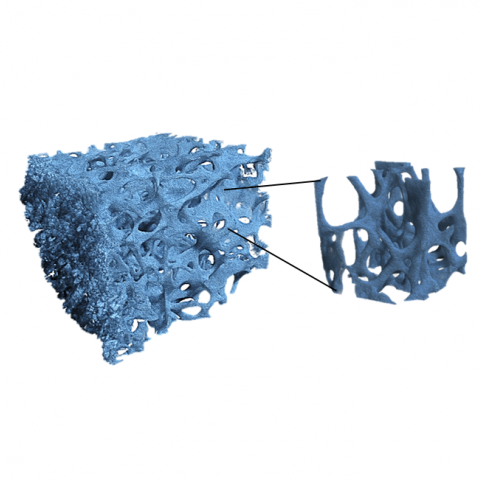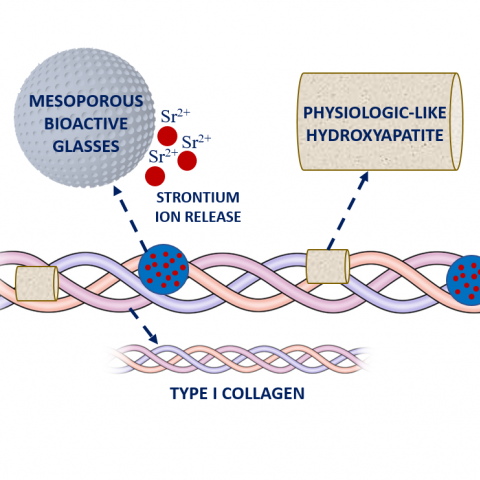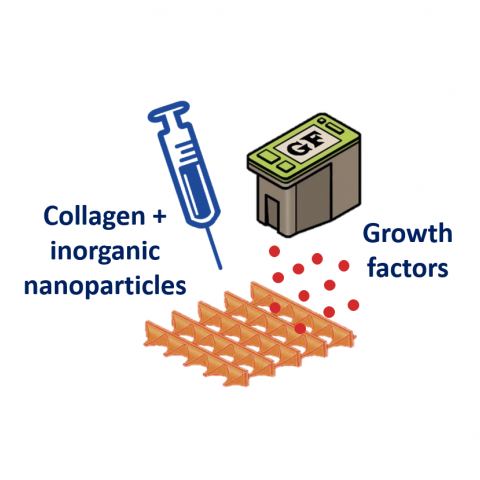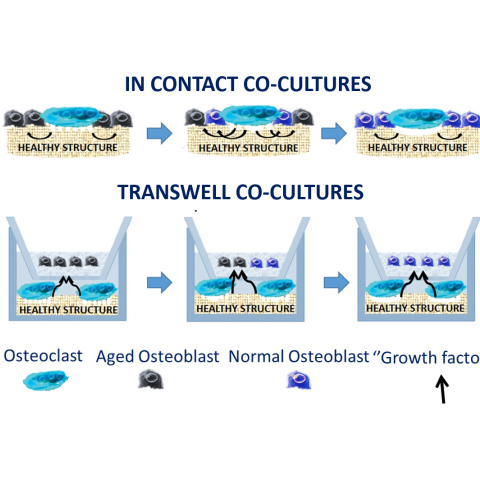The ERC BOOST project addresses the worldwide issue of osteoporosis using an innovative engineering approach, based on biomimetic, smart nanomaterials, architecture design and implementation into 3D scaffolds of suitable biochemical signals.
Project steps

STEP 1: BONE CHARACTERISATION
Healthy and osteoporotic humeral heads discarded during surgical interventions (following ethical approval by Istituto Ortopedico Rizzoli-Italy) will be analysed by means of: nano-computed tomography (nano-CT) to evaluate their 3D structure as well as the mineral bone density (BMD), FE-SEM, Raman spectroscopy, X-ray diffraction to evaluate the hydroxyapatite crystal size, compressive tests, and nanoindentations. The presence of osteoblasts (Ob) and osteoclasts (Oc) will be recognised by means of specific staining while variations of the different, relevant bone matrix components will be evaluated through sample decalcification followed by Western Blot analyses.

STEP 2: MATERIAL DESIGN
In order to mimic bone chemistry a new composite material for the smart scaffold fabrication will be developed. In particular, bovine type I collagen will be used as a matrix and it will be reinforced by an inorganic phase constituted by HA (nano and micro-particles) as well as by mesoporous glass particles containing different ions known to have a beneficial effect on bone formation.

STEP 3: 3D PRINTING
The 3D models of healthy bone tissues, obtained on the basis of the nano-CT input data, will be used for the smart scaffold fabrication by means of an ad hoc developed 3D printing platform. This new platform will be constituted by a pneumatic print head, able to process high viscosity suspensions, for the realization of trabecular-like struts, integrated with an ink-jet head, employed to locally functionalise the scaffold by printing aqueous solutions of growth factors (IGF and β-TGF) in order to mimic the growth factors that are encased in human bone.

STEP 4: CO-CULTURES
Human Ob/pre-Ob and Oc from early osteoporotic patients will be co-cultured on 3D scaffolds, in direct contact or using transwell, in order to verify whether the material driven stimulus can “trick” aged bone cells and direct them toward a re-balanced bone remodeling. In order to have a correct mechanical stimulation of the cell construct, and to guarantee nutrient and oxygen perfusion in the scaffolds, mechanical stimulation will be integrated.
